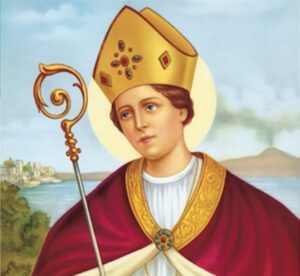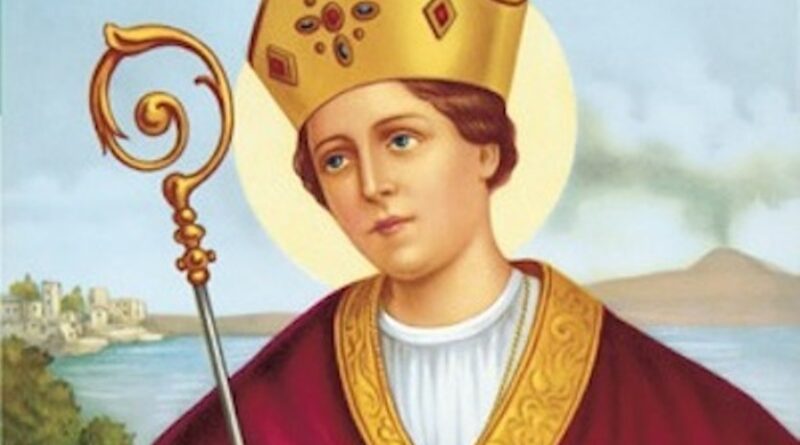San Gennaro: Bridging the Gap between Miracles and Reality

Italy was long known for being home to saints, poets, and navigators; unfortunately however there is no trace of either poets or navigators, however there remains proof of Saints in Italy.
Italian towns honor one or more Saints and one such figure is San Gennaro, famous for his miraculous acts. Who was San Gennaro?
San Gennaro was born somewhere between Naples and Benevento around 272 AD (exact details about where) and became a bishop and martyr for Christianity.
Gennaro tells of his visit to Deacon Sossio who had been arrested by the governor of Campania during persecution against Christians. At that moment, Gennaro embarked on his path that eventually led to martyrdom; yet this path remains shrouded in mystery.
At first, Gennaro was sentenced to be torn to pieces alive by lions on his day of execution; however, on this particular occasion he made them kneel before him after receiving a blessing and making their mark by blessing them all with holy water. Following this miraculous turn of events, the governor ordered that Gennaro and all other convicts had their heads severed at Forum Vulcani on September 305.
Gennaro’s body was then transferred from Agro Marciano and eventually placed in the Catacombs of San Gennaro for burial. Years after Gennaro was executed at his site of execution a shrine was later constructed in memory of martyrdom at this location. According to tradition there were various events held on his day of execution.
Gennaro gave away to a beggar the handkerchief with which Saint Gennaro was blindfolded before beheading so that it would serve as a relic. According to accounts, during his execution the Saint attempted to arrange the handkerchief but the executioner struck violently, cutting even off his finger!
Eusebia reportedly collected some ampulline of Saint Benedict’s blood as part of her memorialization of him and it eventually became his symbol.
Miracle of San Gennaro’s Blood.
As we are all aware, blood is supposed to coagulate upon leaving our veins; however, in San Gennaro it instead tends to liquefy.
This miracle first took place when Eusebia placed Eusebian blood collected for Eusebian on top of Saint Marciano in Agro Marciano. Her blood then turned back into liquid state again.
Since 1389, this miracle was repeated repeatedly and first documented.
Eusebia filled three ampoules with Saint Gennaro’s blood; two are kept in Naples at Cappella Del Tesoro San Gennaro while another can be found at Complesso Monumentale Vincenziano in Borgo delle Vergini, also in Naples.
Cappella Del Tesoro ampoules are displayed to the public during an elaborate, solemn ceremony three times annually (on the Saturday before May’s first Sunday, September 19th and December 16th); if blood returns to liquid state it portends good fortune for Naples while otherwise dramatic events could ensue.
The Church and Science in Relation
Science and Church have both taken differing stances regarding this miracle.
Church teachings make this truth inexplicable and mindbogglingly amazing; yet believers don’t feel obliged to put their faith into it. Church authorities see its significance, while believing depends on each believer’s religious sensibility.
Over time, science has attempted to replicate this miracle numerous times, offering alternative and scientifically sound explanations; but no scientist has been authorized to analyze the liquid contained within ampoules thus heightening the mystery surrounding them.
No matter their views on miracles, their magnitude was very evident to those living in Naples who venerate San Gennaro and many people go out praying his blood in order to bring optimism into their own lives and the city as a whole. Of course, doubts can arise when blood melts off or causes inconvenience, yet part of the wonder behind prodigious events such as these lies in how much devotion these events manage to gather within communities as well as improving individual beliefs.
